Company Profile
Location:
Multimedia
Events
CST Workshop Series 2013 – Microwave & Antenna
CST Workshop Series 2013 – Microwave & Antenna
CST Workshop Series 2013 – EDA & EMC
CST Workshop Series 2013 – Microwave & Antenna
CST Workshop Series 2013 – Microwave & Antenna
CST Workshop Series 2013 – Microwave & Antenna
CST Workshop Series 2013 – EDA & EMC Morning Session
CST Workshop Series 2013 – Microwave & Antenna
CST Workshop Series 2013 – Microwave & Antenna
Training/User Meetings
CST STUDIO SUITE - Microwave and Antenna Advanced Training
Cubesat Antenna Design
Downloads
Embedded Dual-Band GSM Antenna Design
This application note illustrates how CST MICROWAVE STUDIO® (CST MWS), Antenna Magus and Optenni Lab can be used in combination to improve an existing GSM tracking device application. The requirement was to replace an existing “off-the-shelf” antenna on a GSM tracking device with an embedded, integrated antenna in order to reduce manufacturing and component costs.
DownloadInvestigating Cosite Interference Effects on an Automobile
The modern car includes an ever-increasing number of wireless systems. These require an assortment of different antennas, often mounted in close proximity. Coupling between these antennas can lead to cosite interference effects, degrading the performance of the systems or disrupting them altogether. This article demonstrates how a full-wave simulation in CST MICROWAVE STUDIO® (CST MWS) can be combined with RF cosite interference analysis in Delcross EMIT to identify and mitigate EMC/EMI problems.
DownloadDesign of an Ultra-Wideband High-Power-Microwave Traveling-Wave Antenna
In this article we discuss the design and implementation of high-power-microwave (HPM) traveling-wave antenna. The antenna is designed to be driven by a high-power, single-shot signal generator with 1 ns pulse-width at the -3 dB power points, and peak voltage of up to 100 kV. Since the signal generator is equipped with an air-filled coaxial-waveguide output, a coaxial-waveguide to parallel-plates transition was also designed and fabricated.
DownloadAnalyzing RF Coextistence in a Mobile Handset
A typical smartphone handset can contain numerous different RF systems, including multi-band cellular antennas, Wi-Fi, Bluetooth, NFC and navigation systems such as GPS and GLONASS. All these systems need to be able to coexist without causing cosite interference. This application note shows how CST STUDIO SUITE® and Delcross EMIT can be used to investigate interference between antennas on a smartphone, and how potential mitigation strategies can be investigated using simulation.
DownloadKymeta Develops Novel Metamaterial Antennas with CST STUDIO SUITE
To enable widespread adoption of satellite broadband, especially for mobile users, Kymeta is developing and marketing mobile satellite communications terminals using a new reconfigurable antenna technology known as Metamaterials Surface Antenna Technology (MSA-T). This success story looks at how CST STUDIO SUITE was used in the design of these metamaterial antennas.
DownloadEfficient Electromagnetic Simulation of Shielding Mechanisms in Microwave Ovens
The door to a microwave oven forms part of the heating cavity, allowing access to the oven interior. The seal around the door is never perfect, so electromagnetic fields will leak out of the oven, potentially interfering with other electrical equipment or exceeding safety limits for power levels in human operators. Oven designs have to meet legal requirements for the amount of power which can leak beyond a certain distance from the oven (due to human exposure concerns), and also have to meet electromagnetic compatibility (EMC) requirements. This article discusses how electromagnetic simulation can be used to design effective shielding mechanisms in order to adhere to these standards.
DownloadDesign of an Ultra-Wideband High-Power-Microwave Traveling-Wave Antenna
In this article we discuss the design and implementation of high-power-microwave (HPM) traveling-wave antenna. The antenna is designed to be driven by a high-power, single-shot signal generator with 1 ns pulse-width at the -3 dB power points, and peak voltage of up to 100 kV.
DownloadModeling of Large Microwave Cavities for Industrial and Scientific Applications
The cavities of microwave heating devices need to be carefully designed in order to ensure safe, efficient operation and homogeneous field distributions. The size, the number of modes and the resonant nature of a cavity can pose difficulties for their simulation. This paper discusses the modeling of microwave cavities and demonstrates how a system for heating test samples was optimized using electromagnetic simulation.
DownloadAnalyzing RF Coexistence in a Mobile Handset
A typical smartphone handset can contain numerous different RF systems, including multi-band cellular antennas, Wi-Fi, Bluetooth, NFC and navigation systems such as GPS and GLONASS. All these systems need to be able to coexist without causing cosite interference. This application note shows how CST STUDIO SUITE® and Delcross EMIT can be used to investigate interference between antennas on a smartphone, and how potential mitigation strategies can be investigated using simulation.
DownloadCST STUDIO SUITE 2014 Brochure
CST STUDIO SUITE® is a package of tools for designing, simulating and optimizing electromagnetic systems, and is used in leading technology and engineering companies around the world. The three pillars of CST’s products are accuracy, speed and usability.
DownloadMicrostrip Patch Array Design
One common application of printed arrays is in wireless local area networks (WLAN). This article explains the design process for a planar microstrip patch array for WLAN frequencies using the circuit and full-wave 3D solvers and optimization tools in CST STUDIO SUITE®.
DownloadeASIC reduces multi-level package design times with CST MICROWAVE STUDIO
When designing a chip for a high-speed application, the whole channel, including the package and the printed circuit board affects the performance. Find out how multi-level package design times can be reduced with the help of CST.
DownloadEmbedded Dual-Band GSM Antenna Design
This application note illustrates how CST MICROWAVE STUDIO®, Antenna Magus and Optenni Lab can be used in combination to improve an existing GSM tracking device application. The requirement was to replace an existing “off-the-shelf” antenna on a GSM tracking device with an embedded, integrated antenna in order to reduce manufacturing and component costs.
DownloadInvestigating Cosite Interference Effects of an Automobile
The modern car includes an ever-increasing number of wireless systems. These require an assortment of different antennas, often mounted in close proximity. Coupling between these antennas can lead to cosite interference effects, degrading the performance of the systems or disrupting them altogether. This article demonstrates how a full-wave simulation in CST MICROWAVE STUDIO® can be combined with RF cosite interference analysis in Delcross EMIT to identify and mitigate EMC/EMI problems.
DownloadElectromagnetic Simulation for Defense
Electrically large structures such as aircrafts, ships, land vehicles and satellites have demanding and complex electromagnetic environments. CST STUDIO SUITE® brings together 20 years of experience in the simulation of 3D microwave & RF components, antennas and systems. It is used by government agencies and defense contractors world-wide on a daily basis for mission-critical projects. Read about how the tool is used within the defense industry to analyze antenna placement and co-site interference, electromagnetic environment effects, and radar.
DownloadAnalyzing Power Integrity Issues from Power Plane Interaction
When a printed circuit board (PCB) includes a power plane that is near to signal traces or other power planes, there is a significant risk of energy transfer between parts of the system. Not only does this coupling lead to power switching noise being transferred into data signals, it also means that power supply systems may demonstrate additional resonances that are not seen in the individual components. This can affect the power integrity of the PCB and may reduce its speed or reliability. This paper will explore some of the potential power integrity issues that can affect a PCB and explain how simulation can be used to help reduce these effects.
DownloadLow Frequency Electromagnetic Design and Simulation
In the world of electromagnetic and electromechanical design, state-of-the-art Finite Element simulation is critical to the virtual testing of new concepts and optimization of existing designs. CST EM STUDIO® is a specialist tool for the static and low frequency simulation, design and analysis of electromagnetic devices.
DownloadTest Equipment Plus Develops High-Performance Custom Filters With CST MICROWAVE STUDIO
Test Equipment Plus, Inc. provides service and support for the used test and measurement equipment market. They also design, manufacture and sell the Signal Hound® line of portable spectrum analyzers. The first prototypes of the analyzers were in need of a spectral filtering solution to be competitive in the market. This case study describes how Test Equipment Plus utilized the CST MICROWAVE STUDIO® electromagnetic simulation tool to design custom filter solutions through virtual prototyping.
DownloadUsing EMIT for Prediction of GPS Receiver Interference: A Validation Example
GPS receivers (RXs) are ubiquitous in modern life and are relied upon for everything from personal navigation using the GPS embedded in most mobile phones to mission critical functions in commercial and military vehicles. EMIT provides a powerful simulation on capability to predict interference in complex RF environments. In this application note we present the use of EMIT for the prediction of interference in a GPS RX due to a nearby out-of-band TX.
DownloadSavant - Impact of Creeping Waves on Antenna Performance
Savant includes creeping-wave physics, a powerful feature that works with and augments Savant’s baseline shooting-and-bouncing rays (SBR) solution to improve accuracy for antennas mounted directly on curved structures.
DownloadCST STUDIO SUITE - GPU Computing
The high memory bandwidth and parallel processing abilities of GPU cards mean that GPU computing can provide signifi cant simulation speed advantages over conventional CPU computing. CST STUDIO SUITE® supports GPU computing in the transient solver, integral equation solver and particle-in-cell (PIC) solver, using NVIDIA Tesla® GPU cards.
DownloadCST STUDIO SUITE - EMC Simulation for Electronic Products
By law, products must comply with international EMC standards which have been developed to regulate electromagnetic emissions and the susceptibility of electrical and electronic systems. Striking a balance between EMC and competing design requirements poses major challenges to engineers. By including EMC compliant design at an early stage, additional costly development iterations can be avoided later on down the line.
DownloadCombined 3D electromagnetic and spin response simulation of MRI systems
Modern MRI systems are highly complex devices, and the interaction between the body and MRI coils introduces additional challenges into the design process. The body, with its complicated heterogeneous interior, causes major disturbance to the homogeneity of the magnetic fields, while energy absorbed by the body can cause harmful heating. Experimental measurement of these effects is often impossible, but simulation with 3D body models can help the engineer identify risks to the patient and suggest ways to reduce them.
DownloadPulse Electronics Improves Antenna Evaluation and Reduces Product Design Lead Time with CST Microwave Studio
Pulse Electronics Mobile Division produces compact antennas for mobile communications and networking. Mobile antennas need to function in complex and mechanically limited environments, and so most antennas used today are specially designed and customer-specific. This article showcases how Pulse Electronics used 3D EM simulation software to improve antenna evaluation and reduce product design lead time.
DownloadModeling HIRF Effects on Aircraft
Electromagnetic environmental effects (E3) [1] can cause electronic devices to malfunction or fail altogether. High Intensity Radiated Fields (HIRF) [2], from sources such as TV and radio stations, radar and satellite communication systems, may disturb the safe operation of aircraft electronics. The behavior of aircraft when exposed to a HIRF environment can be simulated effectively using CST MICROWAVE STUDIO® (CST MWS). With CST MWS, surface current and field distributions can be calculated and the coupling into shielded structures predicted.
DownloadOptenni Lab
Optenni Lab is a novel software with innovative analysis features that increases the productivity of antenna designers and speeds up the antenna design process. Optenni Lab offers fast fully automatic matching circuit optimization tools, estimation of the obtainable bandwidth of antennas and calculation of the worst-case isolation in multi-antenna systems. With these tools the antenna designer can quickly evaluate various antenna designs and concepts, including multiport antennas and tunable matching circuits. Optenni Lab is very easy to use and does not require specialist know-ledge in impedance matching.
DownloadCST STUDIO SUITE - Charged Particle Simulation
CST PARTICLE STUDIO® (CST PS) is a specialist tool for the fast and accurate 3D analysis of charged particle dynamics in 3D electromagnetic fields. As a member of CST STUDIO SUITE®, CST PS is fully integrated in the CST design environment, taking advantage of the standard-raising user interface as well as the solver technology of our multi-purpose electromagnetic modules CST MICROWAVE STUDIO® (CST MWS) and CST EM STUDIO® (CST EMS).
DownloadCST STUDIO SUITE - Cable Harness Simulation
CST CABLE STUDIO ™ is focused on the analysis of SI, EMC and EMI effects on single wires, twisted pairs, or on complex cable harnesses with an unlimited number of cables. The cable placement is flexible.
DownloadCST STUDIO SUITE - Bio-Electromagnetics
The interaction of electromagnetic fields and biological tissues is relevant in various technical applications. The design of medical equipment and treatment plans generally benefits greatly from simulation; additionally, simulation can give insight into living tissue where measurement is almost impossible. This also holds for all kinds of wireless communication devices surrounding us such as mobile phones, where Specific Absorption Rate (SAR) planning is essential at an early stage of the design.
DownloadCST STUDIO SUITE - High Performance Computing Techniques
CST STUDIO SUITE® offers a broad range of hardware based acceleration methods. The systems that are supported range from single off-the-shelf workstations to high-end cluster based solutions.
DownloadEMIT
EMIT provides an easy-to-use software framework for managing RF system performance data, simulating cosite interference effects, and evaluating mitigation strategies, resulting in a comprehensive model maintainable over the life of a platform.
DownloadSAVANT
Savant is a leading-edge tool for simulating the installed performance of antennas located on electrically large platforms. Using a powerful high frequency EM ray-tracing engine, Savant provides the power to efficiently simulate antenna-to-platform and antenna-to-antenna coupling performance in environments involving electrically large platforms.
DownloadNanophotonics and Integrated Optics Photonic Crystal Cavities
This whitepaper gives a general overview on different concepts of photonic crystal cavities. Important figures such as the transmission, the mode volume and the quality factor are discussed. The presented information will help the reader to decide which type of photonic crystal cavities will be most suited for the application in view.
DownloadOptimization of a Reflector Antenna System
In this paper a modular approach using the so-called System Assembly and Modeling (SAM) of CST STUDIO SUITE® is used to optimize a reflector antenna system in a piecewise manner. The results are compared to a full system simulation.
DownloadSirona Cuts Development Costs of Dental X-Ray Equipment with the Aid of 3D EM Simulation
Sirona products are to be found in all fields of treatment and activities in a modern dental practice. These include, in addition to treatment equipment and instrumentation, the business division CAD/CAM Systems (production of ceramic inlays, onlays, partial crowns etc) and imaging systems with its products for X-Ray diagnosis.
DownloadUsing 3D EM Simulation to Optimize the EMC and EMI Performance of Automotive Multimedia Systems
The use of EDA software for simulating PCBs and minimizing board-level interference in car radios are well established, but the use of 3D simulation techniques for system level field simulations and optimization of the housing was a new development to further improve quality.
DownloadFrom Layout to Eye Diagram CST STUDIO SUITE 2012 and the EDA Workflow
A full-wave 3D electromagnetic simulator can be used to simulate and visualize the propagation of electromagnetic fields across PCBs. This article will describe how CST MICROWAVE STUDIO® can be successfully used to characterize the response of high-speed channels, and how typical SI results and eye diagrams can be numerically calculated to predict the response of a channel.
DownloadMatching circuit optimization for antenna applications
Impedance matching is an essential part of antenna design. The input impedance of an antenna needs to be reasonably close to the amplifier impedance, otherwise the signal is reflected back to the amplifier and not radiated by the antenna. This white paper discusses the optimization of matching circuits especially to antenna applications.
DownloadInstalled Performance of Communication Antenna Arrays
The presence of multiple communication antennas on a tower means that antennas may have to be installed in sub-optimal positions. Electromagnetic simulation can be used to design and optimise the positioning of the antennas on the tower. This article will describe how multiple solvers in CST MICROWAVE STUDIO® can be combined to predict where to install an omnidirectional stacked bicone antenna array to minimise loss of omnidirectionality.
DownloadMicrodul gains deeper insight into finger detection sensors with CST EM STUDIO
Microdul produces proximity sensor chips that can be used with remote sensing plates. Changes in plate capacitance are detected by a digital auto-calibrating algorithm. An approaching human finger typically causes a switching operation. The main challenge is to develop a sensor which can reliably distinguish between intentional switching operation and environmental interference.
DownloadMultiphysics Approach to Magnetron and Microwave Oven Design
The magnetrons used in microwave ovens operate on the same frequency band as Wi-Fi equipment, and the radiation they release can interfere with the operation of wireless networks. This paper presents a multiphysics simulation of a magnetron using CST STUDIO SUITE®, with the aim of testing the electrical, magnetic, thermal and mechanical characteristics of a low-interference magnetron design
Download
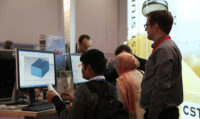
 CST - Computer Simulation Technology AG (CST) previewed the upcoming version of its flagship electromagnetic (EM) simulation tool, CST STUDIO SUITE® 2017, at European Microwave Week 2016. CST STUDIO SUITE is used by engineers, designers and researchers in market-leading companies in industries including automotive, aerospace, defense, electronics, healthcare and telecommunications. CST’s Complete Technology approach to simulation means that CST STUDIO SUITE offers a range of both general purpose and specialized solvers for EM and multiphysics problems in one user-friendly interface
CST - Computer Simulation Technology AG (CST) previewed the upcoming version of its flagship electromagnetic (EM) simulation tool, CST STUDIO SUITE® 2017, at European Microwave Week 2016. CST STUDIO SUITE is used by engineers, designers and researchers in market-leading companies in industries including automotive, aerospace, defense, electronics, healthcare and telecommunications. CST’s Complete Technology approach to simulation means that CST STUDIO SUITE offers a range of both general purpose and specialized solvers for EM and multiphysics problems in one user-friendly interface Dassault Systèmes, the 3DEXPERIENCE Company, world leader in 3D design software, 3D Digital Mock Up and Product Lifecycle Management (PLM) solutions, announced it has entered into a definitive agreement to acquire CST - Computer Simulation Technology AG, the technology leader in electromagnetic (EM) and electronics simulation, for approximately 220 million euros.
Dassault Systèmes, the 3DEXPERIENCE Company, world leader in 3D design software, 3D Digital Mock Up and Product Lifecycle Management (PLM) solutions, announced it has entered into a definitive agreement to acquire CST - Computer Simulation Technology AG, the technology leader in electromagnetic (EM) and electronics simulation, for approximately 220 million euros. Version 4.5 of Antenna Magus, a software tool that helps engineers design and model antennas, is now available. In the new release, an additional seven new antennas have been added to the database, increasing the number of antenna templates to 225.
Version 4.5 of Antenna Magus, a software tool that helps engineers design and model antennas, is now available. In the new release, an additional seven new antennas have been added to the database, increasing the number of antenna templates to 225. Computer Simulation Technology AG (CST) previewed the latest version of its flagship electromagnetic simulation tool, CST STUDIO SUITE® 2014, at European Microwave Week 2013.
Computer Simulation Technology AG (CST) previewed the latest version of its flagship electromagnetic simulation tool, CST STUDIO SUITE® 2014, at European Microwave Week 2013.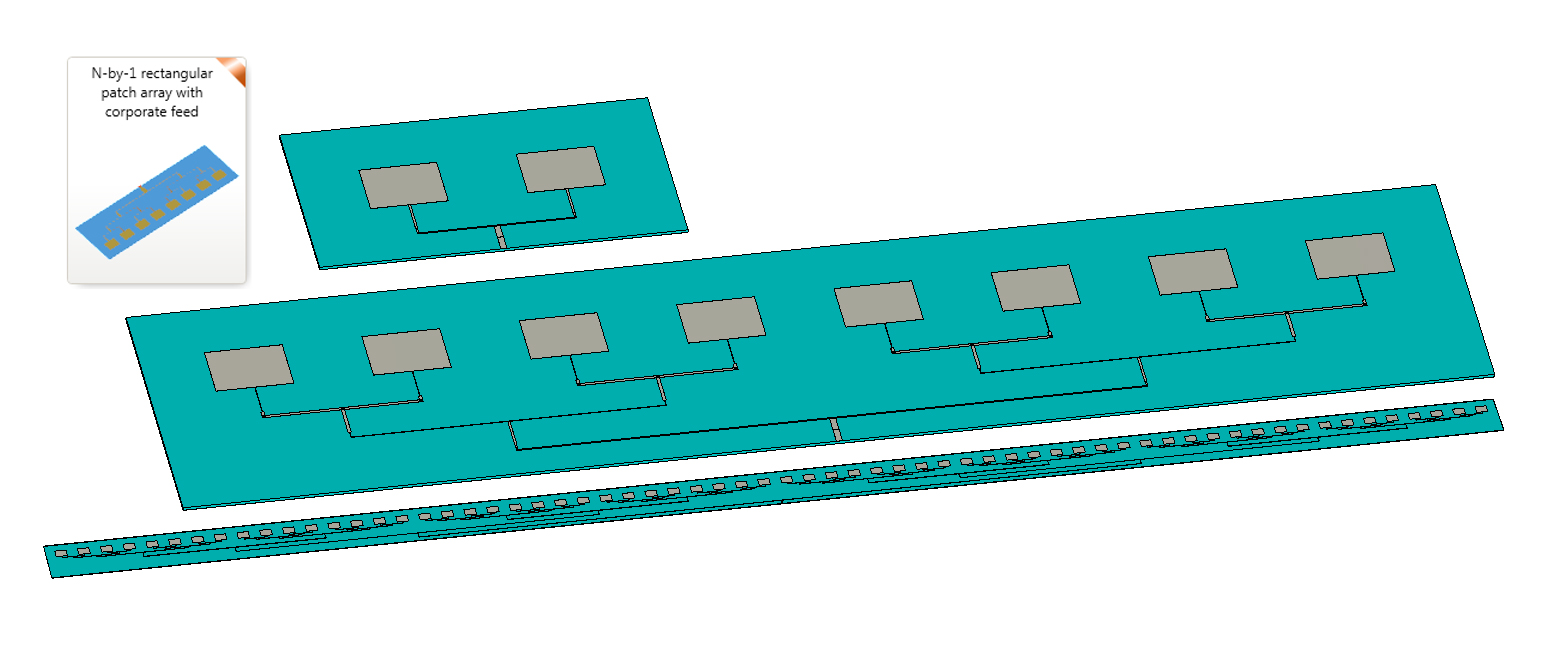 CST and MAGUS are developing new tools for linear antenna arrays including feed networks, to launch with the newest version of Magus' flagship product Antenna Magus.
CST and MAGUS are developing new tools for linear antenna arrays including feed networks, to launch with the newest version of Magus' flagship product Antenna Magus.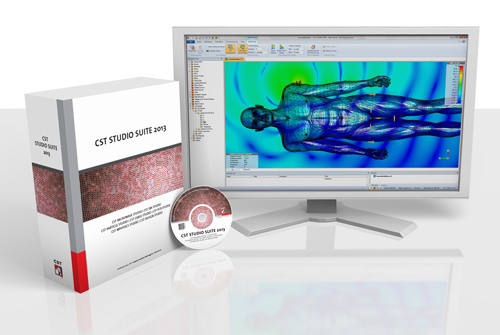 CST announces that shipping has begun for CST STUDIO SUITE® 2013, the latest version of their flagship product. CST STUDIO SUITE comprises a range of EM simulation tools, including the industry-leading high-frequency package CST MICROWAVE STUDIO®.
CST announces that shipping has begun for CST STUDIO SUITE® 2013, the latest version of their flagship product. CST STUDIO SUITE comprises a range of EM simulation tools, including the industry-leading high-frequency package CST MICROWAVE STUDIO®.  CST is excited to announce a new series of technical webinars focusing on the major benefits of full wave simulation to the high frequency/high speed design process.
CST is excited to announce a new series of technical webinars focusing on the major benefits of full wave simulation to the high frequency/high speed design process.  CST previewed the release of its new CST PCB STUDIO 2012 at DesignCon 2012.The new CST PCBS IR-drop solver quickly calculates current distribution and voltage drop on multilayered PCBs.
CST previewed the release of its new CST PCB STUDIO 2012 at DesignCon 2012.The new CST PCBS IR-drop solver quickly calculates current distribution and voltage drop on multilayered PCBs.
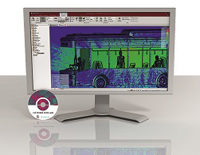
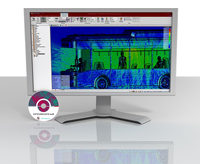
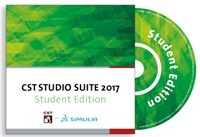
 CST EMC STUDIO (CST EMCS) is a specialized software package for analyzing electromagnetic compatibility (EMC) and electromagnetic interference (EMI) using 3D electromagnetic field simulation. The solvers and tools in CST EMCS have been selected to be especially relevant to EMC engineers, and are drawn from the mature technology of CST STUDIO SUITE and CST BOARDCHECK.
CST EMC STUDIO (CST EMCS) is a specialized software package for analyzing electromagnetic compatibility (EMC) and electromagnetic interference (EMI) using 3D electromagnetic field simulation. The solvers and tools in CST EMCS have been selected to be especially relevant to EMC engineers, and are drawn from the mature technology of CST STUDIO SUITE and CST BOARDCHECK. Computer Simulation Technology (CST) announces features to automate workflows for field source coupling and multiphysics simulation using its System Assembly and Modeling (SAM) framework. The 2014 release of CST STUDIO SUITE builds on this with features that automate the creation of SAM projects for common design tasks, such as antenna placement, emissions analysis and thermal detuning.
Computer Simulation Technology (CST) announces features to automate workflows for field source coupling and multiphysics simulation using its System Assembly and Modeling (SAM) framework. The 2014 release of CST STUDIO SUITE builds on this with features that automate the creation of SAM projects for common design tasks, such as antenna placement, emissions analysis and thermal detuning. CST MICROWAVE STUDIO (CST MWS) is a specialist tool for the 3D EM simulation of high frequency components. CST MWS' unparalleled performance makes it first choice in technology leading R&D departments. CST MWS enables the fast and accurate analysis of high frequency (HF) devices such as antennas, filters, couplers, planar and multi-layer structures and SI and EMC effects.
CST MICROWAVE STUDIO (CST MWS) is a specialist tool for the 3D EM simulation of high frequency components. CST MWS' unparalleled performance makes it first choice in technology leading R&D departments. CST MWS enables the fast and accurate analysis of high frequency (HF) devices such as antennas, filters, couplers, planar and multi-layer structures and SI and EMC effects.
 CST PARTICLE STUDIO® (CST PS) is a specialist tool for the fast and accurate analysis of charged particle dynamics in 3D electromagnetic fields. Powerful and versatile, it is suitable for tasks ranging from designing magnetrons and tuning electron tubes to modeling particle sources and accelerator components.
CST PARTICLE STUDIO® (CST PS) is a specialist tool for the fast and accurate analysis of charged particle dynamics in 3D electromagnetic fields. Powerful and versatile, it is suitable for tasks ranging from designing magnetrons and tuning electron tubes to modeling particle sources and accelerator components. CST MPHYSICS STUDIO (CST MPS) is a powerful and easy-to-use tool for thermal and mechanical stress analysis. Systems and devices very rarely fall neatly into just one area of physics, and multiphysics simulation is often necessary for a complete simulation of the device’s characteristics.
CST MPHYSICS STUDIO (CST MPS) is a powerful and easy-to-use tool for thermal and mechanical stress analysis. Systems and devices very rarely fall neatly into just one area of physics, and multiphysics simulation is often necessary for a complete simulation of the device’s characteristics.

 CST BOARDCHECK is an EMC and SI rule checking program that reads popular board files from Cadence, Mentor Graphics, and Zuken as well as ODB++ (e.g. Altium) files. It checks the PCB design against a suite of EMC or SI rules. The kernel used by CST BOARDCHECK is the well known software tool EMSAT.
CST BOARDCHECK is an EMC and SI rule checking program that reads popular board files from Cadence, Mentor Graphics, and Zuken as well as ODB++ (e.g. Altium) files. It checks the PCB design against a suite of EMC or SI rules. The kernel used by CST BOARDCHECK is the well known software tool EMSAT. Antenna Magus is a software tool to help accelerate the antenna design and modeling process. It increases efficiency by helping the engineer to make a more informed choice of antenna element, providing a good starting design. Validated antenna models can be exported to CST MICROWAVE STUDIO® from a huge antenna database which means that the engineer can get to the customization phase of an antenna design quickly and reliably.
Antenna Magus is a software tool to help accelerate the antenna design and modeling process. It increases efficiency by helping the engineer to make a more informed choice of antenna element, providing a good starting design. Validated antenna models can be exported to CST MICROWAVE STUDIO® from a huge antenna database which means that the engineer can get to the customization phase of an antenna design quickly and reliably. Optenni Lab is a novel software with innovative analysis features that increases the productivity of antenna designers and speeds up the antenna design process. Optenni Lab offers fast fully automatic matching circuit optimization tools, estimation of the obtainable bandwidth of antennas and calculation of the worst-case isolation in multi-antenna systems.
Optenni Lab is a novel software with innovative analysis features that increases the productivity of antenna designers and speeds up the antenna design process. Optenni Lab offers fast fully automatic matching circuit optimization tools, estimation of the obtainable bandwidth of antennas and calculation of the worst-case isolation in multi-antenna systems.

